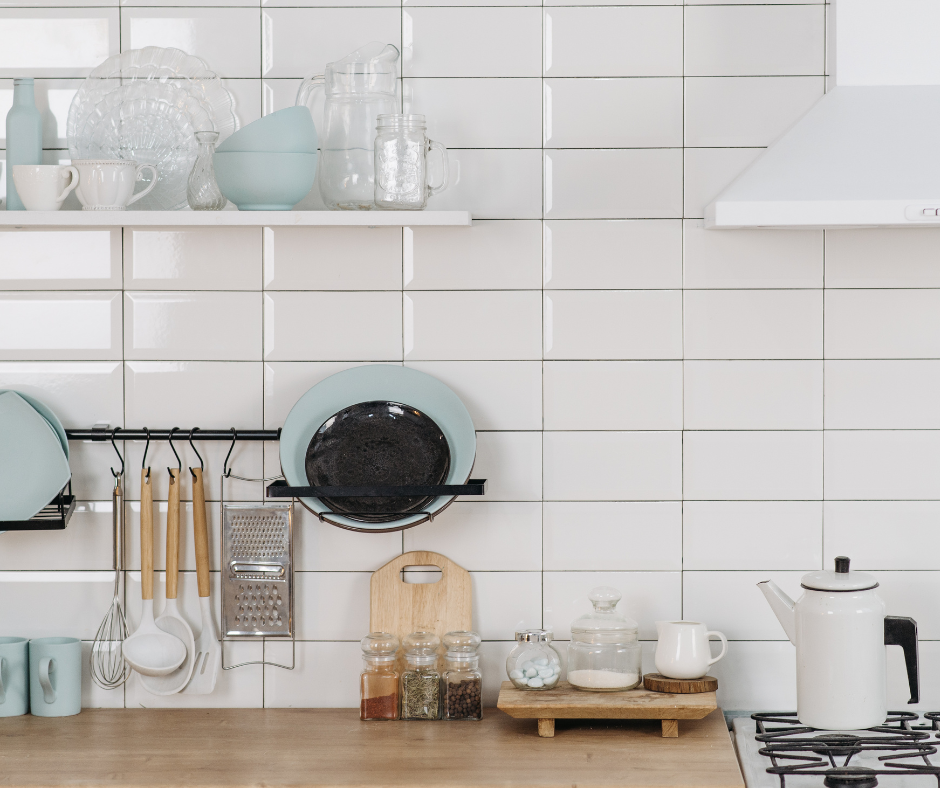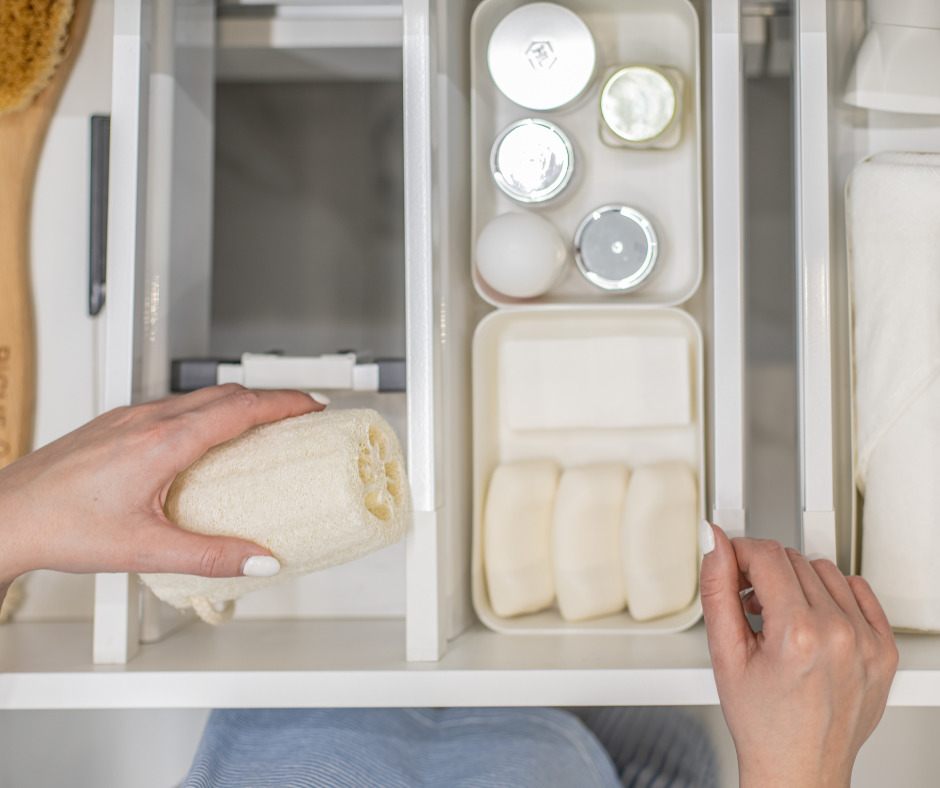Contact Elite Relocation Today
Phone: 512.573.6102
Email: elite.relocationtx@gmail.com
Address:
508 Suzzane Rd, Pflugerville, TX 78660
Get Rid of Stuff Before Moving: Your Comprehensive Guide to Decluttering
Moving to a new home is an exciting adventure, but it can also be a stressful process. One way to alleviate some of this stress is to declutter and get rid of stuff before moving. Not only will this make your move easier, but it can also help you start fresh in your new home. This comprehensive guide will give you all the information you need to declutter before moving effectively.
Benefits of Decluttering Before a Move
Decluttering before a move has several benefits:
1. Saving on moving costs: The less you have to move, the less it will cost. This is especially true if you're using a moving company, as many charges are based on the weight of your items.
2. Reducing moving stress: Having fewer items to pack and unpack can significantly reduce the stress of moving.
3. Starting fresh in your new home: Moving is a great opportunity to eliminate items you no longer need or use, allowing you to start fresh in your new home.
What to Get Rid of Before Moving?

When preparing for a move, you must go through your belongings and decide what to keep and get rid of. Here are some items you should consider getting rid of:
Old or unused clothing and shoes
Moving to a new place is a great opportunity to declutter and remove old or unused clothing and shoes. Here are some steps you can follow to sort through your belongings efficiently:
- Start early: Begin the process of decluttering well in advance of your moving date. Sorting through your clothes and shoes can take time, so it's best to allow yourself time to make decisions.
- Categorize your items: Create categories to help you sort through your clothing and shoes. For example, you can have types like "Keep," "Donate," "Sell," and "Throw Away." This will make the process more systematic and organized.
- Evaluate each item: Pick up each piece of clothing or pair of shoes and consider whether you still wear or need them. Ask yourself questions like: Have I worn this in the past year? Does it fit well? Is it in good condition? If the answer is no, it might be time to part with it.
- Donate: Items in good condition but no longer needed can be donated to local charities, shelters, or organizations that accept clothing donations. Ensure that the items are clean and in wearable condition before donating them.
- Sell: If you have items still in good condition but no longer wanted, you can consider selling them. Online platforms like eBay, Poshmark, or local buy-and-sell groups can help you find interested buyers.
- Discard or recycle: For clothing or shoes that are worn out, torn, or in poor condition, it's best to dispose of them properly. Check with your local recycling centers or textile recycling programs to see if they accept these items.
- Consider sentimental value: Some clothing or shoes may hold sentimental value even if they are no longer used. If that's the case, you can set aside a small box or space to keep those items, but be mindful not to keep too many sentimental items that can clutter your new space.
- Organize what remains: Once you've sorted your clothing and shoes, organize the items you chose to keep. Consider using storage solutions like boxes, hangers, or shoe racks to keep everything tidy and easily accessible.
Outdated or broken electronics
When moving to a new place, it's a good idea to declutter and eliminate outdated or broken electronics. Here are some steps to help you efficiently dispose of them:
- Assess the condition: Gather all your electronics in one place and evaluate each item individually. Determine if they are outdated, broken beyond repair, or simply no longer useful to you. This may include old computers, laptops, printers, gaming consoles, TVs, DVD players, or any other electronic devices you no longer need.
- Check for recycling options: Electronics should not be thrown in regular trash as they often contain hazardous materials—research local recycling options for electronic waste (e-waste) in your area. Many communities have designated drop-off points, recycling centers, or special collection events for e-waste.
- Contact electronic retailers: Some retailers offer recycling programs or take-back initiatives for outdated or broken electronics. Check with local stores or manufacturers of the products to see if they provide any options for returning or recycling electronics.
- Donate or sell functional items: If some of your electronics are still in working condition and you no longer want them, consider donating or selling them. Local charities, schools, or community organizations might accept functional electronics. Online platforms like eBay, Facebook Marketplace, or Craigslist can help you find potential buyers.
- Securely erase personal data: Before parting with electronic devices, please make sure you have securely erased any personal data. Use software or follow manufacturer instructions to wipe the data completely. This step is crucial to protect your privacy and prevent unauthorized access to your information.
- Properly package: When transporting or disposing of electronic devices, it's important to package them securely to prevent damage or potential harm during transit. Use appropriate packaging materials or consult the manufacturer's safe handling and transportation guidelines.
- Consult local regulations: Different regions may have specific regulations regarding electronics disposal—research local laws and regulations regarding e-waste disposal to ensure compliance.
Remember, electronic waste can harm the environment if not disposed of properly. By taking the time to recycle or dispose of outdated or broken electronics responsibly, you reduce environmental impact and keep hazardous materials out of landfills.
Unused kitchen gadgets and dishes
Decluttering your kitchen gadgets and dishes can help you streamline your belongings and simplify packing. Here are some steps to get rid of unused kitchen gadgets and dishes:
- Assess your items: Gather all your kitchen gadgets and dishes in one place. Take a close look at each item and assess its usefulness and condition. Consider whether you have used it in the past year or if it serves a practical purpose in your daily cooking routine.
- Sort into categories: Create categories to help you organize the items. For example, you can have types like "Keep," "Donate," "Sell," and "Discard." This will make the decision-making process easier and more structured.
- Donate: If you have kitchen gadgets or dishes in good condition but no longer needed, consider donating them to local charities, shelters, or community organizations. You can contact local food banks or social service agencies to see if they accept kitchenware donations.
- Sell: If you have unused kitchen gadgets or dishes in good condition, you may be able to sell them. Online platforms like eBay, Facebook Marketplace, or hosting a garage sale can help you find interested buyers.
- Discard or recycle: For broken or damaged kitchen gadgets or dishes that are no longer usable, it's best to dispose of them properly. Check with your local recycling centers or waste management facilities to see if they accept these items for recycling or if they have specific guidelines for their disposal.
- Consider functionality and space: Evaluate your kitchen space and how often you use certain gadgets or dishes. If you have duplicates or items that take up unnecessary space, let them go.
- Organize what remains: Once you've sorted your kitchen gadgets and dishes, organize the items you chose to keep. Consider storage solutions like drawer dividers, shelf organizers, or cabinet racks to maximize space and keep things tidy.
Remember, the goal is to minimize the number of items you pack and unpack, making your move more efficient and organized. Keeping only the essential kitchen gadgets and dishes you use regularly will help create a functional and clutter-free kitchen in your new home.
Old furniture and decorations
These items can be heavy and difficult to move. Consider selling or donating them before your move.
Unused exercise equipment and toys
These items can take up a lot of space and can often be sold or donated.
Old magazines, books, and craft supplies
If you're not actively using these items, it's time to let them go.
Room-by-Room Guide to Decluttering
When decluttering, it can be helpful to go room by room. Here's a guide to help you get started:
Kitchen

Old or unused appliances
If you last used it in the past year, it's time to let it go.
Mismatched dishes and glassware
If it doesn't have a match, it's probably not worth moving.
Expired food and spices
These items can be thrown out before moving.
Living Room

Old or unused electronics
These can often be recycled at your local electronics store.
Outdated decorations
Consider selling or donating if it doesn't fit your new home's decor.
Unused books, DVDs, and games
If you're not actively using these items, it's time to let them go.
Bedrooms

Old or unused clothing and shoes
If you haven't worn them in the past year, let them go.
Outdated or unused furniture
Consider selling or donating if it doesn't fit your new home's decor.
Unused toys and games
If your children have outgrown them, consider selling or donating them.
Bathrooms

Expired or unused toiletries
These can be thrown out before moving.
Old towels and linens
Consider donating these items to a local animal shelter.
Garage/Basement/Attic
Unused tools and equipment
Consider selling or donating if you last used it in the past year.
Old or broken furniture
If it's not in good condition, it's probably not worth moving.
Miscellaneous items in storage
If you last used it in the past year, it's time to let it go.
How to Get Rid of Stuff: Practical Methods
Once you've decided what to eliminate, the next step is figuring out how to do it. Here are some practical methods:
Donating to charity: This is a great option for good-quality items. Plus, it's a great way to give back to your community.
Selling online: Websites like eBay and Craigslist make it easy to sell unwanted items.
Hosting a garage sale: This can be a fun and effective way to eliminate many items quickly.
Renting a roll-off dumpster: This can be a convenient option if you have many items to dispose of.
Hiring a junk removal service: These services will come to your home and remove unwanted items for a fee.
Recycling: Many items, such as electronics and paper products, can be recycled.
Composting: Organic waste, like food scraps and yard waste, can be composted.
Giving away to friends and family: If you have items you don't need, think someone else might consider giving them to friends or family.
Tips for Effective Decluttering
Decluttering can be daunting, but with the right approach, it can be manageable and even enjoyable. Here are some tips to help you declutter effectively:
Start early and schedule dedicated time: Decluttering is time-consuming, so start and schedule specific times to work on it.
Involve kids in the process: If you have children, get them involved. They can help sort through their toys and clothes.
Use the power of piles: Create three piles for items: keep, donate/sell, and trash. This can help you stay organized.
Don't linger on old memories: It can be easy to get caught up in nostalgia when going through old items, but try to stay focused on the task.
Use the 20/20 rule for decluttering: If you can replace it for less than $20 in less than 20 minutes, consider removing it.
Professional Help for Decluttering
If decluttering feels overwhelming, consider hiring a professional organizer. They can provide guidance and support throughout the process, helping you make tough decisions about what to keep and what to get rid of.
Packing Tips for the Remaining Items
Once you've decluttered, it's time to pack up the items you're keeping. Here are some tips to help you pack effectively:
Use moving boxes and supplies: Invest in sturdy boxes and packing supplies. This can help protect your items during the move.- Pack with pride: Take the time to pack your items carefully. This can help prevent damage during the move.
FAQ Section
Here, you can answer common questions about decluttering and moving. This can be a great way to provide additional information and address your readers' concerns.
This comprehensive guide should give you all the information you need to declutter before moving. Happy decluttering and happy moving!
Decluttering before a move can be challenging, but with the right approach, it can be a rewarding process that makes your move easier and helps you start fresh in your new home. Remember, the key is to start early, stay organized, and not be afraid to let go of items you no longer need or use. If you are ready to move and you need a professional moving company, you may call us at (512) 573-6102 or you may visit our website www.eliterelotx.com.
Contact us
Our services
Useful Links
All Rights Reserved | Elite Relocation
